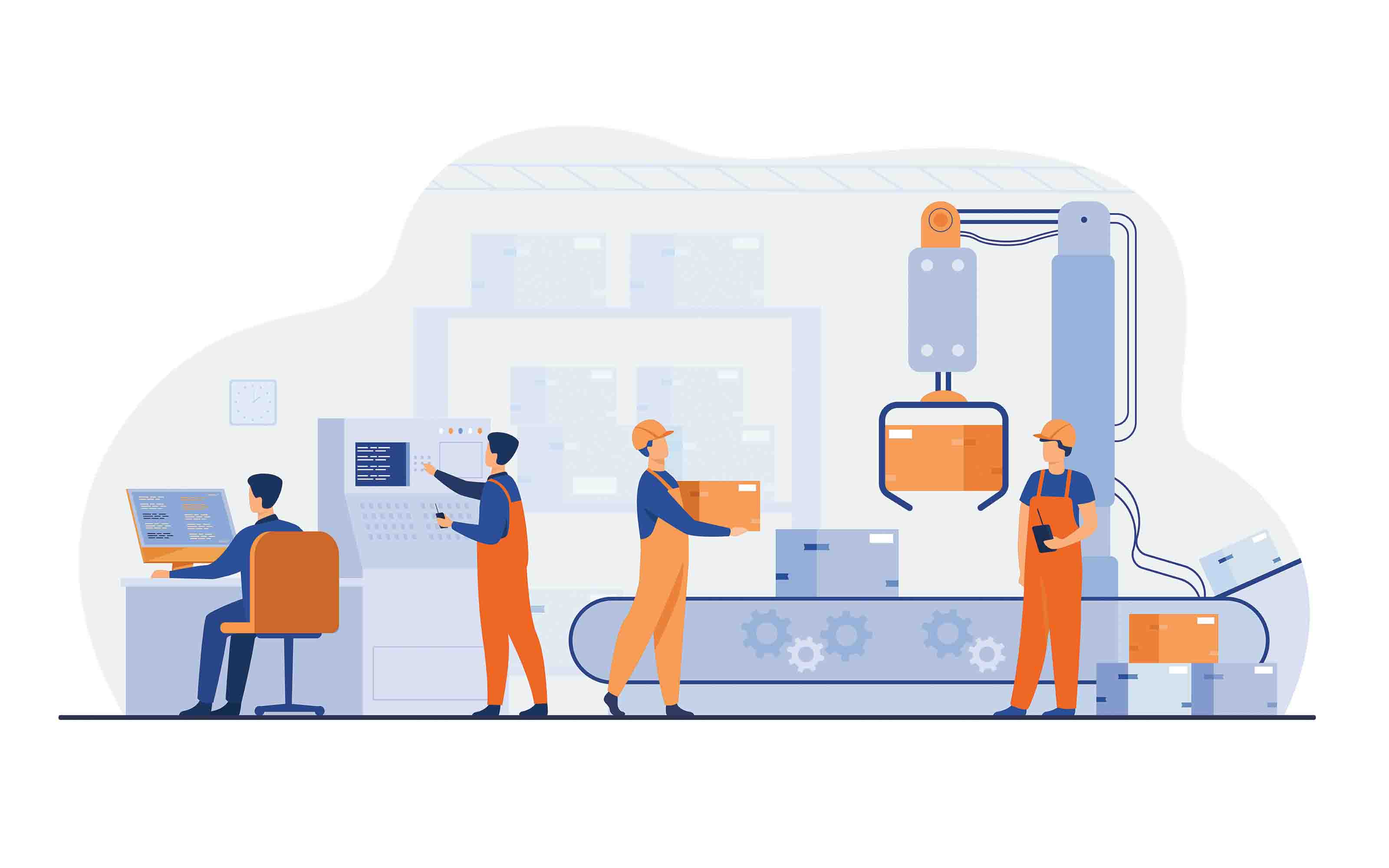
Leveraging a CEM when planning for manufacturing resiliency
| Overview: Manufacturing leaders need to visualize the evolving scenarios of threats to their operations. A business continuity plan designed with scalable and agile critical event management technology supports their vision to mitigate vulnerabilities and nurture growth. Key Takeaways:
|
When looking to build a strong business continuity structure, the most common scenarios manufacturing leaders keep in mind are the impacts of critical events on manufacturing operations and productions.
Manufacturing industries that have dispersed operational plants are having a greater level of challenges. In a plant located at a far-flung location, cyclones may keep the operations shut, while other dispersed branches continue their operations- but with the lagging support from a disrupted plant, supply chain operations collapse and hit customer fulfillment.
Simultaneously, fire means the closure of a manufacturing plant that needs repairs or relocations. More such growing critical event challenges emerge daily. The types of threat may be different by location, with different types of rescue efforts being brought forward for earthquakes in one place and hailstorms in another place.
Visual risk intelligence and location intelligence improves decision-making and builds a better design that encourages business continuity while giving the best ability to mitigate the impacts of critical events at a large scale.
Why do manufacturing leaders focus on business continuity?
It is important organizations of all types should consider business continuity or resilience for operational processes. Identifying or addressing resiliency between every step of the process is crucial in manufacturing industries too.
From securing an IT infrastructure to preventing disruptions to critical equipment and facilities through to providing employee safety and maintaining a healthy supply chain management, they can reduce vulnerabilities to operational efficiency.
If leaders fail to realize the importance of business continuity, they are unable to withstand a variety of threats during critical events, which not only impacts their reliability but also affects their growth.
As per IDC, businesses can have monetary losses of up to $100,000 per hour for an infrastructure failure. Critical application failure costs businesses up to $ 1 million per hour.
Each part of the manufacturing process is integral to each other- which means the failure of each component has a ripple effect on the resiliency and most importantly growth. Rapidly responding to critical events and adapting to their impacts can help manufacturing leaders become resilient.
Zapoj CEM can provide flexible business continuity strategies that manufacturing leaders can utilize to be prepared for unexpected threats and get the ability to detect, respond, and recover from critical event threats.
Achieve a better view into threat recovery
Organizations today look to continue their operations across every significant area. Disaster recovery can only be one side of the resiliency approach, but business continuity provides a holistic advantage to leaders and their future growth scope.
To achieve speed to overall resiliency strategy, recovery efforts should be designed ahead of time - not only when disaster emerges with the trigger of a fire, storm, flood, or other devastative incidents.
The ability to harness historical threat data in respect to the impacts that ensued some time back or a year ago could lead to the discovery of the exact causes of IT system failures or critical equipment failures in some parts of the manufacturing plants. In addition, artificial intelligence that simplifies the identification of threat patterns can reveal missing links in the recovery efforts of a particular time and suggest improved methods to remediate vulnerabilities to operational efficiency.
Zapoj gathers lots of data- from imagery satellite, social media channels, weather feeds, public or private agencies, and multiple sources that interact about the events. This robust CEM platform is a dedicated architecture to preserve data into its database, which gives manufacturing leaders an efficient way to analyze and observe - where the impact was so harsher, how long was the facility disruption, or did their emergency response team manage the threat to their assets with their best capability.
By understanding the conditions and impacts of the critical events, leaders can make an informed decision about how much resources they need to mitigate the threat of facility disruptions or what changes they must make to their contingency plan in response to the identical threat in the future.
With an ability to combine a variety of datasets, Zapoj can perform advanced calculations that help reveal ways to ensure employee safety in various situations during a fire, man-made disaster, or extreme weather conditions.
Respond to threats to manufacturing operational processes 
Critical events are becoming more stubborn, frequent, and less predictable. Like every business sector, manufacturing needs to safeguard its people and assets so that the impact of operation disruptions does not linger for indefinite periods.
The winter weather calamities, cyclones or storms and man-made disasters raise challenges to operational continuity. The most common scenario of the impacts of these critical events is facility disruptions due to roof collapses, failed IT systems, or power outages.
To respond to business closures because of the facility disruptions, critical event management-reinforced recovery efforts are the most desirable. The emergency preparedness plan works efficiently and effectively for emergency response teams in different dispersed manufacturing plants before, during, and after the critical events.
Leaders also need to gather real-time data to ensure safety and resilience to their supply chain efficiency.By building a common operating picture, it is easier to achieve situational awareness about where it is facing weather challenges or political unrest. The location data also helps track evolving situations ahead of its route and allows emergency response teams to coordinate better. As a result, the collaborative approach helps optimize resources and manpower efficiently and facilitates operational continuity.
As discussed earlier, using historical data in the Zapoj database, leaders can prioritize incidents that are more likely to occur and impact business operations. Different types of testing drills can be effective and help manage rescue efforts for them.
It is important to communicate as quickly as possible to collaborate with the right person and facilitate the recovery efforts. Using a mass notification system in Zapoj, they create customized message templates specific to the evolving situations and build contextual awareness for the receivers.
During any critical situation, if employees are in harm’s way, location intelligence gives location accuracy, and reaching out to the right person becomes easier with an up-to-date contact center built upon Zapoj. Emergency responders can escalate messages to the right person to the right location without creating any panic or adding to information fatigue. In safeguarding employees, real-time critical communication plays an important role. The multimodal communication channel keeps everyone informed and protected.
Business continuity in the manufacturing sector is critical to reducing the supply shortage, meeting consumer demand while building strategies to prevent vulnerabilities.
Zapoj harnesses bespoke AI technologies to equip its capabilities to build visual risk intelligence and situational awareness. With the ability to collect data from a global network of tools and technologies and across the manufacturing locations, leaders utilize Zapoj to monitor every step of the manufacturing processes. The real-time visibility into end-to-end operations involving workforce, IT systems, logistics, or supply chain movement provides actionable insights and accuracy into decision-making.
As leaders need to coordinate and collaborate, real-time critical communications improve understanding and therefore keep their emergency people up for mitigating risks and keep their employees protected.
A major part of a business continuity plan depends on the efficiency and effectiveness of tools and techniques that leaders use to handle risks and restore operations. Zapoj is purpose-built to meet the expectations of emergency response teams to ensure manufacturing resilience.
We know manufacturing resilience is important to future growth and customer satisfaction. Being a manufacturing leader if you are determined to prevent disruptions and support business continuity, leverage Zapoj. Schedule a demo today.
Are youprepared to handle critical events? Signup for free
If you intersted to follow our blogs : Subscribe
